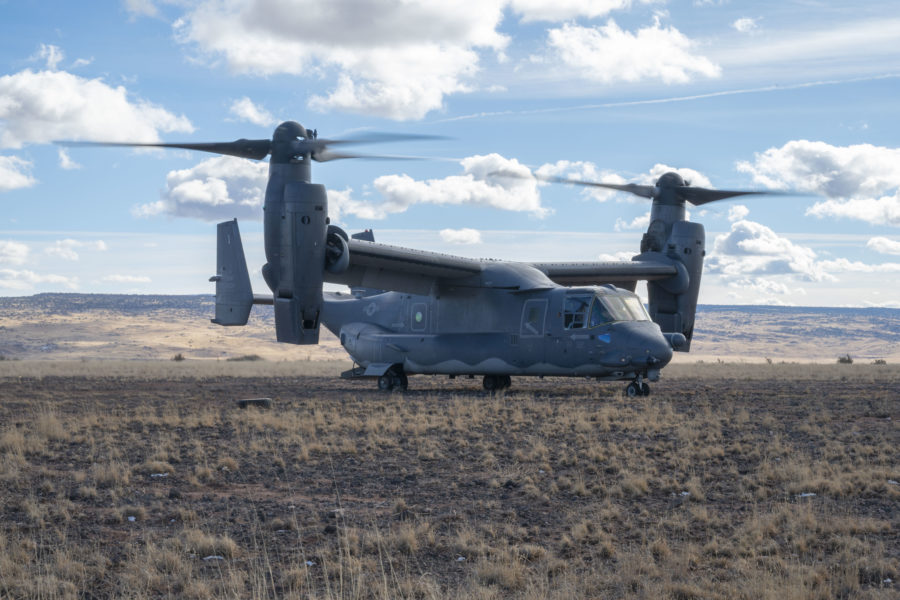A little more than five months after Air Force Special Operations Command briefly stopped flying its CV-22s over a safety issue, an undisclosed number of Ospreys across the service will be grounded until maintainers can replace components that have exceeded a new flight-hour limit.
The V-22 Joint Program Office said Feb. 4 it is imposing flight-hour limits on V-22 input quill assemblies; if installed assemblies exceed that limit, aircraft will remain grounded until the parts are swapped out. Precisely how many aircraft are affected or what the new flight hour limit is were not disclosed.
The input quill assembly is part of the prop rotor transmission, which includes the gearbox and clutch, and transmits power from the engine to the Osprey’s massive propellers.
Over the course of six weeks in the summer of 2022, Air Force CV-22s suffered “hard clutch engagement” incidents. At the time, then-AFSOC commander Lt. Gen. James C. “Jim” Slife explained that the problem would begin with a slipping clutch, which caused a fail-safe feature in the system to transfer power from one engine to the other, as if the first engine was no longer engaged. However, because the clutch was only slipping, and not disengaged, it was suddenly re-engaging, generating enormous spikes in torque.
Such incidents result in “kind of a Christmas tree of lights, caution lights, in the cockpit, and some pretty squirrely flight control inputs,” Slife said at an AFA Warfighters in Action event in September 2022.
The problem is relatively rare, and the Air Force, Marine Corps, and Navy did not understand the root cause until the summer of 2022. AFSOC had only experienced two instances of hard clutch engagement in the prior five years, but then saw two in quick succession, convincing Slife to suspend flights.
“My stand down was really an opportunity for us to bring some attention to this in the engineering enterprise and with our industry partners, because the approach up to this point has been: Until we understand the root cause, there’s really nothing we can do about it,” Slife said. “And my view is we may not understand why it’s happening, but we absolutely know that it is happening. And so we need to take a closer look at what is happening and maybe remove some of the precursor events to each one of these.”
At the time, only AFSOC took action, and after two weeks lifted its restrictions. But on Feb. 4, the V-22 JPO imposed the change, saying it is working on “24 initiatives, such as data mining, laboratory and flight testing, and hardware redesign” with the aim of implementing short-, medium-, and long-term solutions.
“It was a result of these efforts that we identified and implemented the time limit for the Input Quill Assembly,” a statement from the office reads, adding that other relevant findings will also be used to improve the V-22’s safety.
The office did not immediately respond to an Air & Space Forces Magazine query as to whether the input quill assembly was identified as the root cause of the hard clutch engagement issue, but Defense One reported that manufacturer Bell-Boeing is working on a complete redesign of the clutch.
